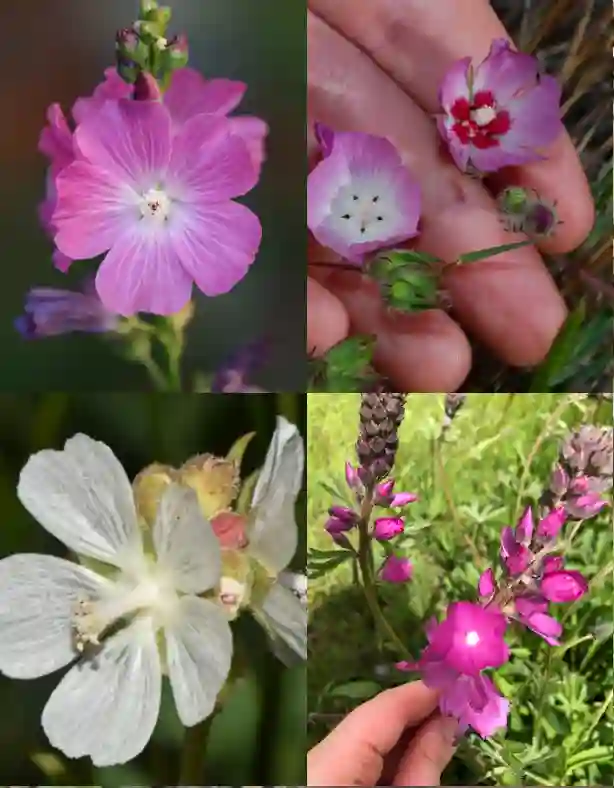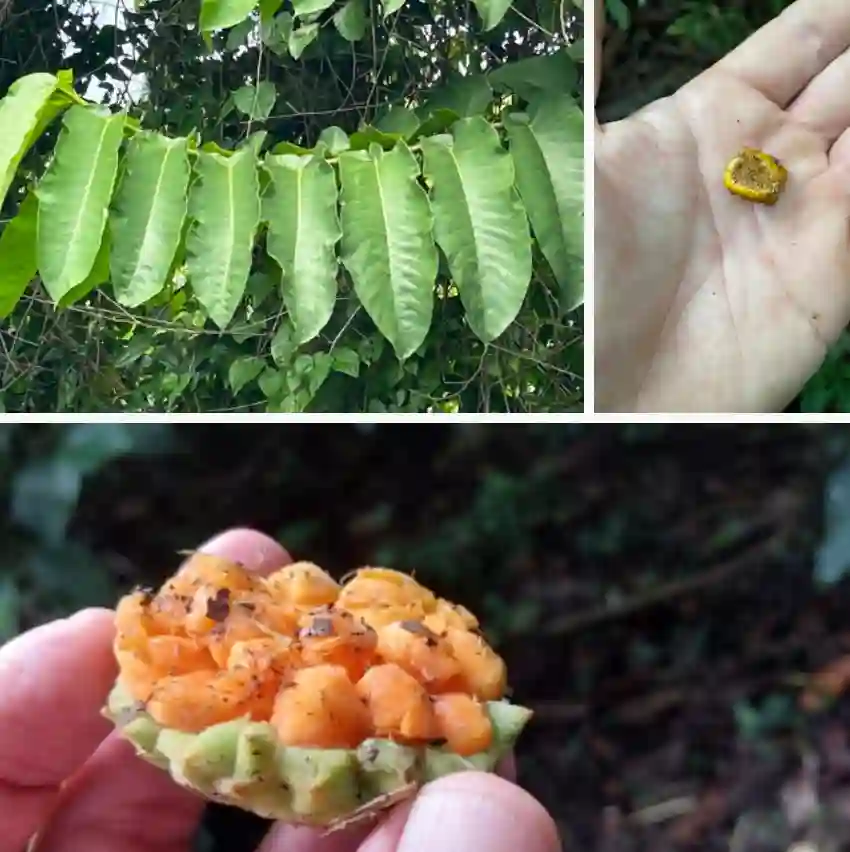Introduction
If you’re a nature enthusiast or a plant lover, you’ve probably heard of pitcher plants. These intriguing carnivorous plants have captured the imagination of many with their unique pitcher-shaped leaves that serve as passive pitfall traps for unsuspecting insects. In this article, we will delve into the captivating world of pitcher plants, exploring the various types that belong to the Nepenthaceae, Sarraceniaceae, Cephalotaceae, and Bromeliaceae families.
Pitcher Plants: Nature’s Carnivores
Pitcher plants are a remarkable example of nature’s ingenuity. They have evolved to thrive in habitats with poor soil conditions, such as pine barrens and sandy coastal swamps, where obtaining essential nutrients like nitrogen and phosphorus can be challenging. To overcome this hurdle, pitcher plants have developed a carnivorous adaptation, relying on their unique pitcher-shaped leaves to trap and digest insects and other small creatures.
The Family Sarraceniaceae
Plant Family: 3 Genera in Sarraceniaceae
Let’s begin our journey by exploring the family Sarraceniaceae. This family is home to three genera of pitcher plants, primarily found in North America and the Guiana Highlands in South America. These carnivorous wonders are well-adapted to habitats like bogs, swamps, wet meadows, and savannas, where the soil is acidic and nutrient-poor.
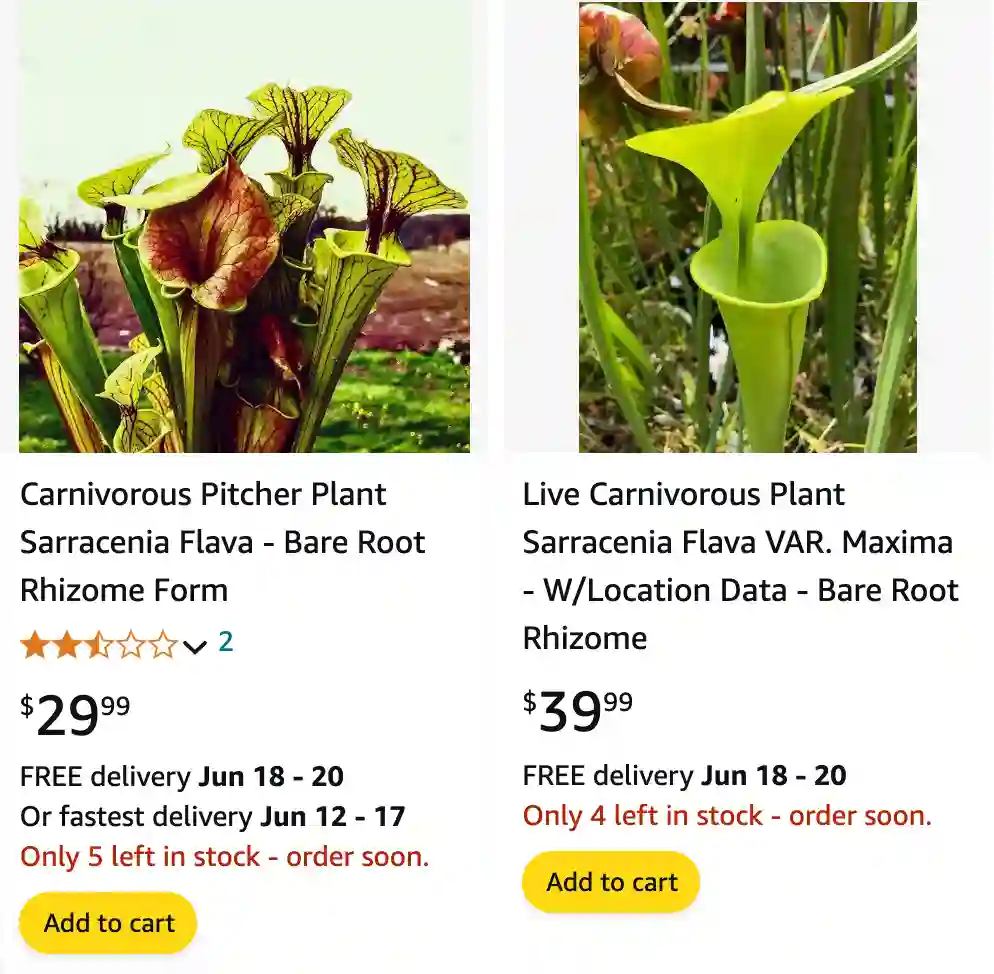
- Genus Sarracenia: The common pitcher plant, often referred to as the trumpet pitcher, belongs to this genus. With approximately 10 species native to eastern North America, Sarracenia species employ a fascinating mechanism to capture prey. They lure insects and other creatures to their demise with nectar-secreting glands located along the lip of the pitcher. The smooth throat of the pitcher sends the unsuspecting prey tumbling into a pool of liquid at the bottom, where digestion occurs. Some notable species within this genus include the purple pitcher plant, parrot pitcher plant, sweet pitcher plant, crimson pitcher plant, and yellow pitcher plant. 32 Species in Genus Sarracenia
- Darlingtonia californica (Cobra Plant): Unlike other pitcher plants, the cobra plant has a unique strategy. Native to swamps in northern California and southern Oregon, its hooded pitcher-like leaves resemble striking cobras. Instead of producing digestive enzymes, it relies on bacteria to break down its prey. Darlingtonia Californica in Genus Darlingtonia – Cobra Lily – California Pitcher Plant
- Genus Heliamphora: Known as sun pitchers or marsh pitcher plants, this genus consists of around 23 species. These remarkable plants are native to the rainforest mountains of western Brazil, Guyana, and Venezuela. They form cushions on ridge crests and swampy depressions, boasting stout pitchers that can reach up to 50 cm (20 inches) in height. 18 Species in Genus Heliamphora
The Family Nepenthaceae
Moving on to the family Nepenthaceae, we encounter a diverse group of tropical pitcher plants with approximately 207 species. These unique plants can be found in Madagascar, Southeast Asia, and Australia, thriving in acidic soil and even as epiphytes on tree branches. Plant Family: Nepenthaceae – 207 Species in Genus Nepenthes
- Genus Nepenthes: This genus includes some of the largest carnivorous plants, such as Attenborough’s pitcher plant, which can reach up to 1.5 meters (4.9 feet) in height and capture even rodents. Other cultivated species include the slender pitcher plant, common swamp pitcher plant, golden peristome, and various hybrid species like Hooker’s pitcher plant.
- Utilizing Animal Feces: Some Nepenthes species have evolved to use animal feces as a nutrient source, especially in regions with limited insect populations. Species like N. rajah, N. lowii, N. macrophylla, and N. hemsleyana have developed unique strategies to attract and benefit from animal waste.
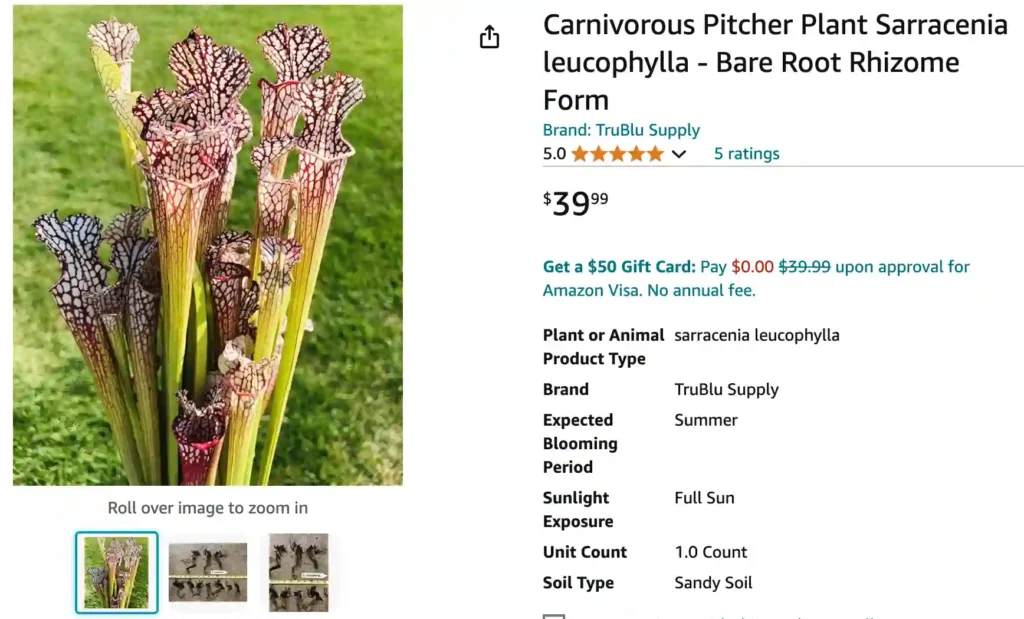
The Family Cephalotaceae
Plant Family: Cephalotaceae – Cephalotus Follicularis in Genus Cephalotus – Albany Pitcher Plant
The family Cephalotaceae is home to a single genus, Cephalotus, and its only species, the Western Australian pitcher plant (Cephalotus follicularis). Unlike most pitcher plants, Cephalotus has traditional leaves in addition to its pitfall traps. This small perennial herb is native to southwestern Australia, and its short green pitchers are protected by a distinctive red-and-white-striped lid, which serves both to prevent rainfall from filling the trap and attract prey. Due to habitat loss, this species is classified as vulnerable on the IUCN Red List of Threatened Species.
Pitcher Plants as Houseplants
If you’re looking to add a touch of intrigue and natural pest control to your indoor garden, pitcher plants are an excellent choice. These carnivorous plants have unique aesthetics and can help keep indoor pests at bay.
Pitcher Plant Varieties
Pitcher plants come in various species, but two of the most common are Nepenthes and Sarracenia. Nepenthes are known for their graceful, arching pitchers with large, colorful traps that attract insects. On the other hand, Sarracenia, often called the trumpet pitcher, features tall, slender tubes with brightly colored pitchers in various shades, patterns, and sizes.
Growing Pitcher Plants
Whether you want to cultivate pitcher plants outdoors or indoors, there are essential factors to consider for their successful growth.
- Planting Pitcher Plants Outside: If you live in USDA Hardiness zones 7 and above, you can safely add pitcher plants to your outdoor landscape. They thrive when potted near other plants that provide extra nitrogen and moisture, such as ferns and begonias. However, avoid potting them near other carnivorous plants to prevent competition for resources and attracting too many insects.
- Caring for Pitcher Plants Indoors: As houseplants, pitcher plants require proper care, including adequate light, moisture, and attention to soil conditions. They need long periods of bright light and should be watered when the soil is 25 percent dry to avoid drought conditions. Pruning may be necessary if leaves or pitchers turn brown due to insufficient soil moisture or humidity. Importantly, avoid fertilizing pitcher plants, as they primarily derive their nutrients from trapped insects.
Repotting and Propagating Pitcher Plants
Knowing when to repot and how to propagate your pitcher plants is essential for their long-term health.
- Repotting Pitcher Plants: When your pitcher plant outgrows its current pot or exhibits signs of overcrowding, it’s time to repot. Look for roots emerging from drainage holes or easily lift the plant from its pot. Repotting ensures continued healthy growth.
- Propagating Pitcher Plants: Depending on the variety, you can propagate pitcher plants by division or stem cutting. Sarracenia pitcher plants are best propagated by division, while Nepenthes varieties thrive through stem cutting. These methods allow you to expand your collection or share these captivating plants with others.
Common Problems and Solutions
Pitcher plants are generally hardy, but they can face a few common issues, including fungal problems from standing water and pests like spider mites, thrips, and aphids. To maintain the health of your pitcher plants, monitor soil moisture levels, trim browning leaves, and use non-toxic insect sprays when needed.
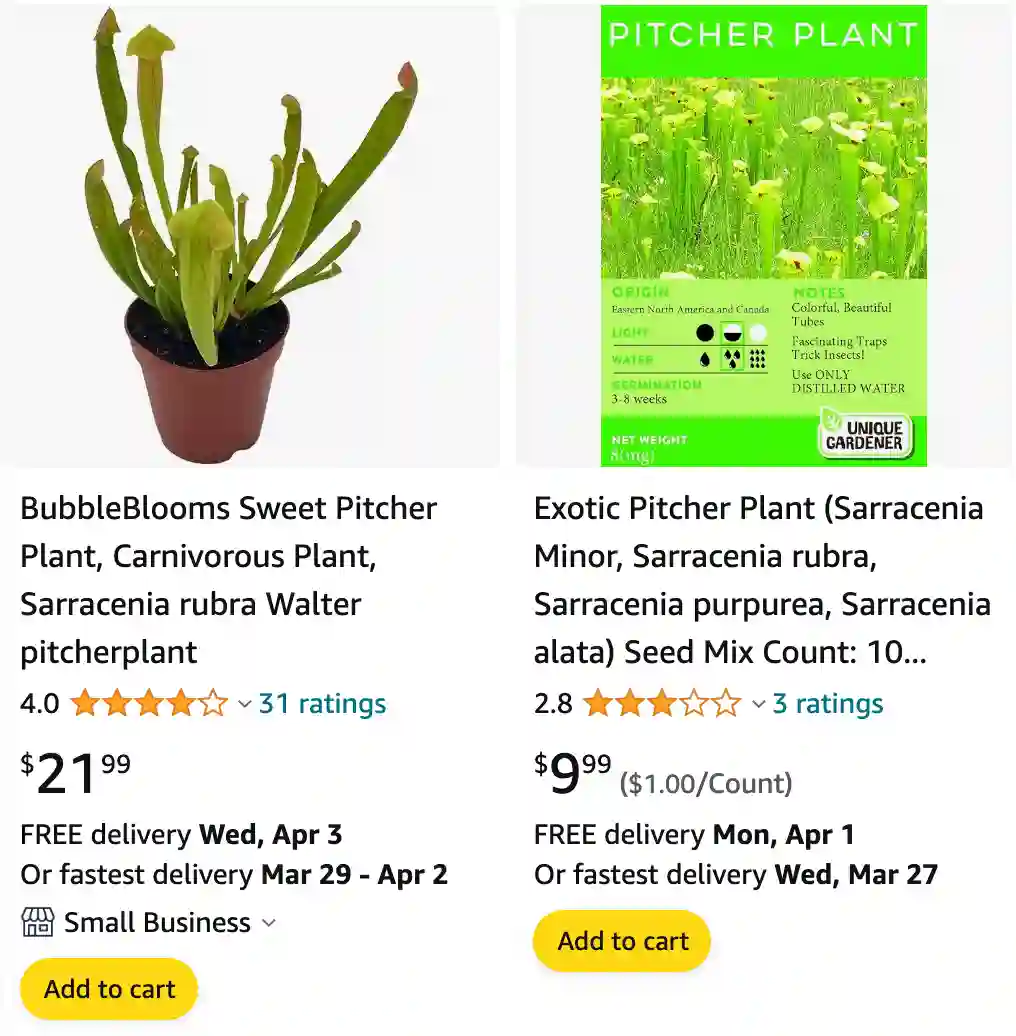
Conclusion
In this comprehensive exploration of pitcher plants, we’ve ventured into the fascinating world of these carnivorous wonders. From the Sarraceniaceae family’s trumpet pitchers to the Nepenthaceae’s tropical beauties, these plants showcase nature’s incredible adaptations. Whether you choose to cultivate them outdoors or enjoy them as unique houseplants, pitcher plants are sure to captivate your attention with their intriguing form and predatory habits. Embrace the world of pitcher plants, and discover the wonders of nature’s carnivores.
If i die, water my plants!
